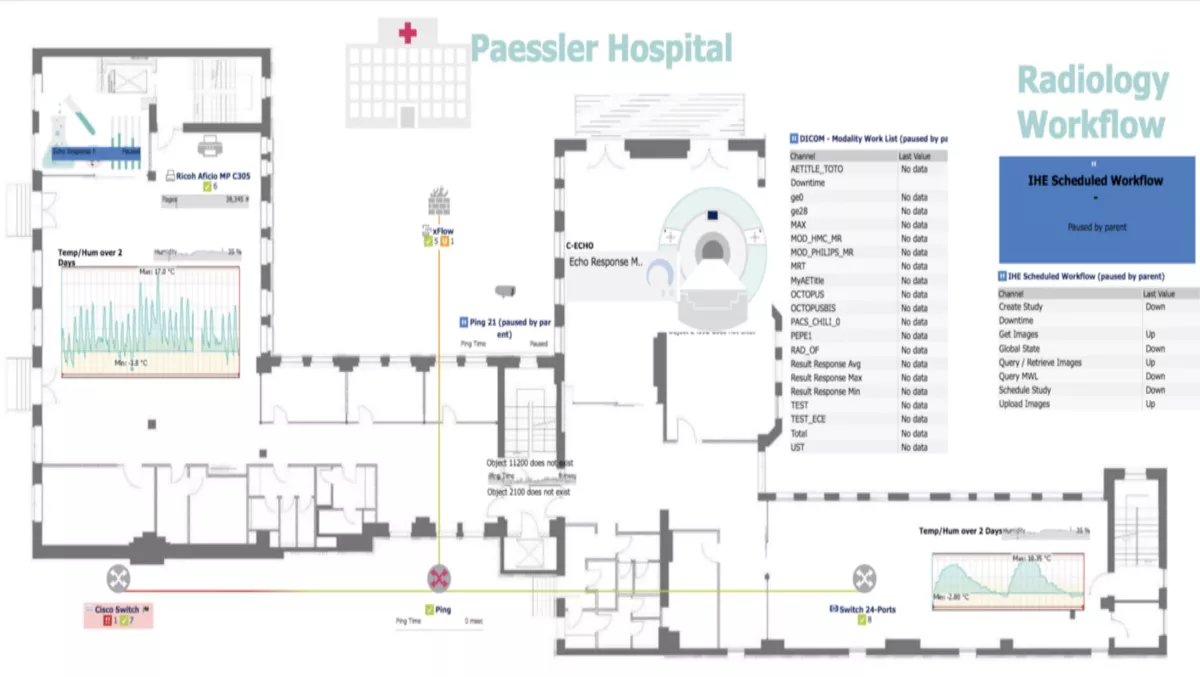
Hands-on review: PRTG Network Monitor
Let me start off by saying that this has been a technically challenging article to write. I could easily generate a series of interviews about this monitoring tool, which is far more than the subheading suggests.
PRTG Network Monitor does monitor your network, but it does it in a way that is infinitely customisable and allows you to obtain data on a wide range of issues.
I'm going to start with the sensor because that terminology may be a trifle misleading. Every network item will have a series of sensors, the number varying depending on the complexity of that item's role within your network. PRTG represents each device by a number of coloured boxes.
These display information about that device. Let's say we look at the sensor called the "Ping" sensor. "One sensor monitors one single aspect on one device." (Click here to watch the video on sensors).
You may be monitoring the CPU, disk space, RAM and so on. Each device will have multiple sensors, the Ping and any other sensor is made up of a range of Metrics.
That's the information the sensor is monitoring. In this diagram you can see the metrics being monitored by the one sensor. Each of the metrics is called a Channel, so this one sensor is monitoring five different metrics, from Downtime through to Ping Time.
If you have a disk sensor the one sensor will monitor all the disks on that device. The more disks, the more channels. Depending on the size of your network and its complexity, you will end up having many sensors.
Those of you familiar with software packages will know that often you find limited functionality on lower-priced packages. Paessler don't do this, preferring to give full functionality and allowing the user to choose from packages based on the number of sensors.
You can start with a small package of 100 sensors and progress to packages of up to or more than 10 000 sensors. It will depend on the size and complexity of your network.
For example, my home can easily manage with 100 sensors. However, if I had a number of smart devices and IoT devices, I may quickly need to expand. Imagine a home with a smart air conditioner, a smart fridge and smart security devices. Each of these would be mapped by PRTG.
Larger enterprises may be spread across the globe, but this presents no problem for Paessler. Even if one or more of your networks is experiencing connectivity issues, PRTG offers the use of Remote Probes that will collect and process data back to the core server.
However, these probes are clever enough to wait until connections are restored. They will then send off the packets of data collected when the connection was down.
Going even further, the way PRTG uses Dashboards can be as graphical as you require. For example, you can easily create a network map that fits to a floor plan of your building.
The real beauty of PRTG though is the endless possibilities it offers. Talking with Paessler's software engineer, Aaron, we discussed the possibility of using PRTG to monitor the government's pest eradication programme. Imagine sensors being placed on every trap throughout the country, reporting back metrics to the central server.
Imagine a dairy farmer who wants information on each and every cow in the herd. Sensors attached to a tag could record which stall the cow enters, and provide metrics based on volume, milk fat content and how it compares to other data already collected.
Incredibly, PRTG can be utilised across a range of diverse industries. Think of the mining and construction industry with self-driving vehicles and automated machinery. Accidents and injuries could be prevented as monitoring automatically stops all connected vehicles and machines that malfunction.
Both hospitals and education institutions have undergone digital transformations in recent years. Students now all carry laptops and participate in e-learning classrooms, but with both students and teachers also carrying smartphones, added pressure is being placed on the IT infrastructure and unpredicted downtime could mean disruptions in learning.
Hospitals have streamlined their services and can now monitor everything from environmental temperatures in the Operating Room and blood bank, to patient care machinery and administration computers throughout the building. Monitoring the network has not only simplified processes but ensured patient care is top of mind always.
With PRTG the possibilities are endless. Recognising this, Paessler have set up PRTG Scriptworld a site where users can share scripts they have created in an open source setting. The possibilities are endless, as are the ways users can utilise the data collected.


